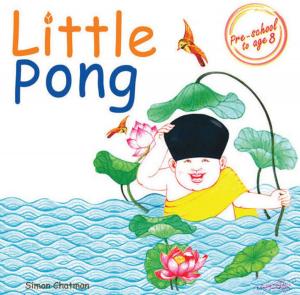Quantum Physics in the Age of Artificial Intelligence
Lessons Learned from China
Nonfiction, Science & Nature, Science, Physics, Gravity, Relativity, Astrophysics & Space Science| Author: | Jan Krikke | ISBN: | 9781641532044 |
| Publisher: | booksmango | Publication: | September 12, 2018 |
| Imprint: | Language: | English |
| Author: | Jan Krikke |
| ISBN: | 9781641532044 |
| Publisher: | booksmango |
| Publication: | September 12, 2018 |
| Imprint: | |
| Language: | English |
What happens when we look at two of the most important sciences of today, quantum physics and artificial intelligence, through Chinese eyes?
We see that the Chinese developed an esthetic theory about space and time centuries before Albert Einstein developed Relativity Theory. We also understand why the Chinese world view inspired quantum mechanics pioneers Niels Bohr and Werner Heisenberg, psychoanalyst Carl Jung and the leading figures of the spiritually focused New Age movement.
A fresh look at China’s ancient world view can even help us understand why binary code inventor Gottfried Leibniz argued that the Chinese invented the first binary code. The Chinese used different symbols – broken and unbroken lines instead of 0 and 1 – but Leibniz claimed the underlying principle was the same. Leibniz is the “spiritual” father of AI and the first to propose the “mechanization” of thought.
AI and quantum mechanics are confronted with similar questions: Is nature continuous or discrete, wave or particle, analog or digital? How will AI address this dichotomy? Can the Chinese world view shed light on this unresolved mystery?
In the 21st century, China is likely to make its presence felt throughout the world. Understanding its ancient world view can help us anticipate this influence and it may show us the contours of the future of AI, arguably the last “hard” science humanity will ever need.
“This book contains fascinating stories largely unknown, a history of Western scientific ideas, an insightful interpretation of ancient Chinese culture, and mind-expanding connections between East and West, art and technology, past and future. A unique play of creative ideas!”
Bill Kelly, Lecturer in Intercultural Communication, UCLA (ret.)
What happens when we look at two of the most important sciences of today, quantum physics and artificial intelligence, through Chinese eyes?
We see that the Chinese developed an esthetic theory about space and time centuries before Albert Einstein developed Relativity Theory. We also understand why the Chinese world view inspired quantum mechanics pioneers Niels Bohr and Werner Heisenberg, psychoanalyst Carl Jung and the leading figures of the spiritually focused New Age movement.
A fresh look at China’s ancient world view can even help us understand why binary code inventor Gottfried Leibniz argued that the Chinese invented the first binary code. The Chinese used different symbols – broken and unbroken lines instead of 0 and 1 – but Leibniz claimed the underlying principle was the same. Leibniz is the “spiritual” father of AI and the first to propose the “mechanization” of thought.
AI and quantum mechanics are confronted with similar questions: Is nature continuous or discrete, wave or particle, analog or digital? How will AI address this dichotomy? Can the Chinese world view shed light on this unresolved mystery?
In the 21st century, China is likely to make its presence felt throughout the world. Understanding its ancient world view can help us anticipate this influence and it may show us the contours of the future of AI, arguably the last “hard” science humanity will ever need.
“This book contains fascinating stories largely unknown, a history of Western scientific ideas, an insightful interpretation of ancient Chinese culture, and mind-expanding connections between East and West, art and technology, past and future. A unique play of creative ideas!”
Bill Kelly, Lecturer in Intercultural Communication, UCLA (ret.)















